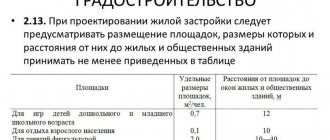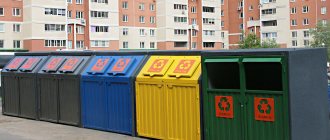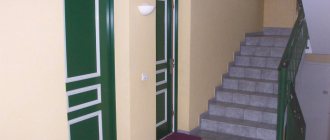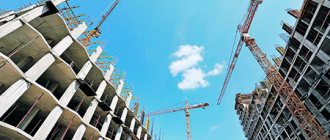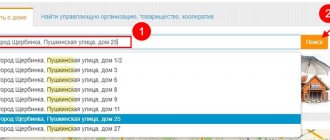A children's playground is a play space necessary for the full, harmonious development of the younger generation. Equipped in a special way, thoughtfully and rationally, it provides boys and girls with everything necessary for physical training. In an active form that is natural for children, agility, tenacity, strength and other important qualities develop.
That is why the installation of a correct, balanced and safe playground should be based on the requirements of GOST.
List of basic requirements
The main purpose of children's playgrounds is to develop a child's interest in games and a healthy lifestyle, to develop existing skills, and to acquire new abilities. One of the important concepts is the baby’s ability to engage in active activities without the participation of adults, which can be called relative independence. This can explain the brightest colors of the buildings, which act as a kind of advertising that attracts the attention of children.
Original Playground Source www.landezine.com
Children's playgrounds built in new microdistricts inspire confidence, and some of them (due to their architectural solutions of the most unimaginable complexity) may well act as a kind of landmark of the area. Unfortunately, this description does not apply to all territories. Moreover, a few of them (built back in the Soviet era) evoke nostalgia among parents about their childhood and fears for the health of the children playing on them.
Fortunately, such sites are becoming fewer and fewer, but they still exist.
Important! The convenience and safety of its operation depends on the quality and competence of the installation of the playground!
The installation of modern playgrounds is regulated by a number of certificates and standards regulated at the legislative level. From a whole range of nomenclature, we can highlight several of the most relevant:
- The territory of the playground must be isolated from roads along which cars move and removed from their parking areas by at least 10 m.
- The playground should not be a walk-through area or have a fence separating it from pedestrian movement areas.
- It should have both sunny and shaded areas.
- The minimum distance separating it from solid waste collection sites is 20 m.
- Structures and structures are subject to visual and functional inspection at least once a quarter.
- The removal of old sand and the importation of new sand must be carried out annually. Moreover, the safety of the composition is confirmed by a sanitary and hygienic certificate. During the off-season and prolonged periods of rain, the sandbox should be covered with dense, water-resistant material. Control over implementation is assigned to the heads of the responsible institution (municipality, management company, homeowners' association).
- If possible, facilities for children of different age groups are installed separately.
Removing the playground from home and shops Source img.kuban24.tv
Interesting! In fact, the last condition is not met due to lack of free space in the yards. Facilities for children of different age groups are installed nearby, on the same playground, but at a safe distance regulated by GOST.
Facilities and simulators
Requirements for the structures and playground complexes of the playground in the yard must comply with the conditions prescribed in state standards:
- All complexes and free-standing attractions must have a quality certificate, which is provided by the supplier or manufacturer.
- The wood materials used for its construction are treated with a special protective impregnation that prevents rotting and fire.
- The corners are rounded and the surfaces are ground (polished).
- When placed on the territory, children (including disabled people) must have free access to all structures.
- The sharp edges of hardware (screws, bolts, self-tapping screws) must be hidden with special caps. This is done to minimize the likelihood of injury.
- Welding seams are sanded and painted.
Children's playground facilities and attractions Source www.natpress.net
Important! The distance between structures and attractions is such that other children can move around them during use.
Children's playground made of combined materials Source novayploshchadka.rf
The materials used to make the structure can be:
- Natural wood (board, beam, shield, etc.).
- Types of plastics that meet environmental requirements and are resistant to ultraviolet rays.
- Rolled metal elements (profiled or round pipes, angles, fittings), sheet metal.
Healthy! The structures belong to the group of small architectural forms, from the individual elements of which you can build a full-fledged children's playground that is in no way inferior to a ready-made play complex.
TOP 10 most unusual playgrounds in the world
In conclusion, we share with you bright and original playgrounds from all over the world. Sometimes adults approach with uncontrollable imagination the arrangement of places for the younger generation to play. And then truly unusual creations are born.
- A giant playground located in a former shoe factory, St. Louis, Missouri, USA (officially the City Museum)
- Inflatable water playground, Croatia, Bol village
- The original Gulliver children's park, Valencia, Spain.
- Fairytale Chinese labyrinth. Guangdong forest
- A bronze man with very small bronze men on it. It’s exciting not only to climb on it, but also to look for these “babies” scattered all over the surface. Manhattan Boy is located in New York, USA.
- Forest Discovery Park, Memphis
- Narrow mesh “skyscraper”. Venue "Valhalla", Purmerend, the Netherlands.
- Children's playground... for adults! A unique outdoor gym that lights up at night thanks to the energy generated by people exercising on the machines. Green Heart, Kingston upon Hull, England.
- Knitted crocodile playground, Sao Paulo, Brazil.
- Dancing houses from the company Monstrum, whose creations are also in Russia (Gorky Park, for example). This site is located in Copenhagen, Denmark.
Dimensions
The area of the playground is “tied” to the age category of children for whom it is intended. In addition, the number of residents plays a role.
Standard sizes of a playground Source static.tildacdn.com
Healthy! The approximate stipulated standard affecting the area of the territory that a children's playground should occupy is 0.5-0.7 m2 per person.
The optimal sizes are considered to be:
- The area of a small playground for preschool children is 50-75 m2.
- The area of a standard playground for preschool children is 70-150 m2.
- The area of the playground for school-age children is 100-300 m2.
- The area of the integrated play area is 90-1,600 m2.
Children's playground with artificial grass Source ic.pics.livejournal.com
The percentage relative to the area of the residential area should not be less than 10%. The central and historical areas of the city or dense buildings force them to compensate for the lack of territory, keeping an eye on city standards. In some cases, the situation may be considered individually.
Fencing
Strict dimensions of the fence are not specified; the standards in this category include only a recommended value of 0.7-1 m. This creates the effect of visual fencing of the territory, makes it difficult for the child to leave the territory of the playground and ensures visual control of those inside.
Children's playground fencing Source mer-voronezha.ru
Other requirements for fencing a playground:
- The fence should not be solid, otherwise it will impede visibility, disrupt the ventilation of the lower layers of air and may cause a fall during sudden gusts of wind.
- It is advisable to adhere to vertical lines, otherwise the fence will become an additional traumatic structure (most likely the child will see it as a structure that must be climbed over). The horizontal outline is present only at the top and bottom points. It is used to impart rigidity to the structure and minimize the likelihood of damage from the protruding ends of vertical fragments.
- The distance between the individual elements of the playground fencing is made taking into account that no part of the body, for example, a head, gets stuck between them. On average, the step between the picket fences is at least 10 cm.
- The manufacturing material should not have sharp edges, burrs or other places that could cause injury to a child upon contact.
- The playground fencing is made of durable material that can withstand the weight of minors.
Varieties
The classification of fences is carried out depending on the type of playgrounds, as well as the material of manufacture.
Sites can be divided into the following types:
- Public ones, which are located inside the courtyard of a multi-storey building or on the territory of a microdistrict. They are available to all children, regardless of age.
- Specialized areas for children of a specific age group.
- A play area located on the territory of a preschool institution.
- Personal: located on the territory of a private house, usually surrounded by an external fence of the entire site.
Depending on the material of manufacture, a fence for a playground can be:
- Wooden
- Metal
- Plastic
- From green spaces.
Each of these types is characterized by its own advantages and disadvantages. For example, wooden fences for playgrounds are safer than metal ones, but less durable. Metal fences are strong, stable, and can protect a child on the playground from an accidental collision with a car. To set up a playpen on private property, chain-link fencing is often used. Metal sections are most often used to decorate children's playgrounds in courtyards. They are painted with bright paint and decorated with various figures made of plastic, plywood, as well as plants. Typically, a project for their arrangement in courtyards is envisaged when landscaping the local area. To prevent the fence from rusting and the paint from peeling off, the rods must be coated with a primer and then several layers of paint for exterior metal work.
Plastic ones are attractive in appearance, lightweight, easy to install, and also cheap. Children will love the bright PVC fence in a variety of configurations: in the form of arches, palisades, animal figures. Such structures are multifunctional: they can be used not only as a playpen, but also as a fence for a pool, or as a limiter for zoning. However, they are characterized by low strength and are designed to limit the movement area of only the youngest children.
Hedges are usually installed on playgrounds for school-aged and older children, when there is no longer a need to monitor the child’s every movement.
Coating
The covering of children's playgrounds must have a high shock-absorbing surface coefficient. The focus in this case is on the concept of Head Injury Criteria (HIC). The purpose of this condition is the likelihood of damage to the child’s skull as a result of an accidental fall during play. Minimizing such risks is associated with the softness and elasticity of the new coating.
Popular holiday destination Source inlytkarino.ru
The concept is a conditional value, the value of which depends on the height of the playing structures. The higher the complex, the softer the surface should be. However, their recommended height is no more than 3 m.
Rubberized area for active games Source static.tildacdn.com
Healthy! The optimal covering for a playground that meets modern requirements is rubber or crumb rubber. It minimizes scratches and wounds as a result of falling, does not slip, and does not allow moisture to pass through.
What danger awaits children on the playground?
The playground is a high-risk place for young children. Parents should be with the baby at all times, protecting him from possible injuries. However, control must be unobtrusive, otherwise such walks will be of no use. After all, the main purpose of a specially equipped space is to develop children, so a certain freedom is still necessary.
There are plenty of dangers at the sites, despite the fact that they are set up taking into account all safety requirements. Here are just the most common of them:
- Falling from height. Many complexes, although protected by special walls and fences, pose a potential danger. It is important to ensure that the child does not fall, either himself or as a result of the actions of other children.
- Scratches or abrasions. Most platforms are made from a material such as wood. This choice is quite clear: safe, hygienic, natural. However, due to wear or improper handling, there is a risk of scratching. All wooden platforms have this disadvantage, unlike, for example, plastic or metal ones.
- Bruises, cuts. It happens that while playing, children fall, hit each other, and injure each other. Here the task of parents is to control the activities of boys and girls, protecting them from accidents. This does not mean at all that you cannot use different exercise machines. No, it is possible and even necessary, but with appropriate insurance.
The basic rule for using any playground is to give children freedom, while unobtrusively controlling their actions. The development of children must advance, only then will it be possible to achieve an impressive result. However, while the child is at an age when responsibility for actions has not yet been formed, and he does not yet see the consequences of his own actions, strict adult control is necessary.
The legislative framework
Legislative acts and regulations governing the requirements for children's playgrounds operating in the Russian Federation.
GOST R 52301-2013
Applies to all structures intended for collective use. Contains items that reveal the following features:
- Installation and installation of equipment.
- Documentation provided by the manufacturer (supplier).
- Monitoring and maintenance of equipment, including functional, regular and annual inspections and their schedules.
- Safety requirements for operation.
GOST R 52169-2012
Equipment zones according to GOST R 52169-2012 Source Interatletika
Reveals the following aspects:
- Safety requirements for materials, equipment, load-bearing capacity of structures.
- Characterizes the meaning of the play area, landing, support, fall, unexpected obstacles, dimensions of equipment and foundation.
- Test studies of maximum loads, wear resistance, degree of jamming.
GOST R 52167–2012
Applies to swings of all types. Characterizes the following nuances:
- Explains the classification of swings into types (with one axis of rotation, with several axes, with one point of suspension, collective).
- Discloses safety requirements for each type.
- Describes test studies, including those of a dynamic nature.
Swing zones according to GOST R 52167-2012 Source files.stroyinf.ru
GOST R 52168–2012
Valid on all slides, with the exception of water slides intended for roller skating or slides that require auxiliary equipment (tubing, sleds). Classifies into 2 types, taking into account the average angle of inclination of the final section (no more than 10 and no more than 5°).
A slide that meets the state standard Source avatars.mds.yandex.net
GOST R 52299-2013
Valid for stationary rocking attractions. Classifies them into 6 types, characterizes the list of safety requirements and testing of equipment.
Children's playground with rocking chair Source Interatletika
GOST R 52300-2013
Valid for all types of carousel-type attractions with a diameter exceeding 500 mm. Classifies into 6 types, describes the conditions regarding safety requirements and test studies for each of them.
Safe carousel for children's playground Source www.huck-seiltechnik.
GOST R EN 1177-2013
This is what the soft, elastic coating is intended for. Source i1.wp.com/cdnimg.rg.ru
Reveals methods and types of testing the surface of coatings regarding the ability to soften the impact when a child falls. Defines the critical fall height, which is the maximum limit of permissible head injury.
GOST R 54847-2011
Applies to attractions whose operating principle is based on a cable car, rides on which are carried out under the influence of gravity. Classifies into 2 types: with seat and with hanging handle. Reveals the nuances of safety requirements and details of test studies.
Bungee for middle and older children Source d.radikal.ru
GOST 33602-2015
Characterizes the concept of the main terms used:
- Children's playground.
- Equipment for it.
- Children's play complex (town).
- Fall zones.
- Landing zones.
- Spaces of fall.
Gives a detailed explanation of the concepts used in the names of attractions and structures.
GOST R 55678-2013
Explains what is hidden under this concept of children's sports equipment and how it differs from ordinary ones. Explains the following aspects:
- The concept of terms and definitions.
- Based on structural and functional characteristics, equipment is classified into several groups.
- Contains key safety regulations and element testing technology.
- Describes how to identify and label each unit.
GOST R 55677-2013
Applies to elements installed on children's sports grounds intended for teenagers. Does not affect fitness areas, beach equipment and structures intended for sport climbing. Includes a list of terms and conditions regarding safety requirements regarding materials, installation and operation. Characterizes test studies.
GOST R 55679-2013
Contains a list of general safety requirements for installation and use of equipment. Contains the following items:
- Terms and Definitions.
- Installation and installation of equipment.
- Documentary base provided by the seller (manufacturer).
- Control and maintenance of elements.
- Safety requirements during operation.
